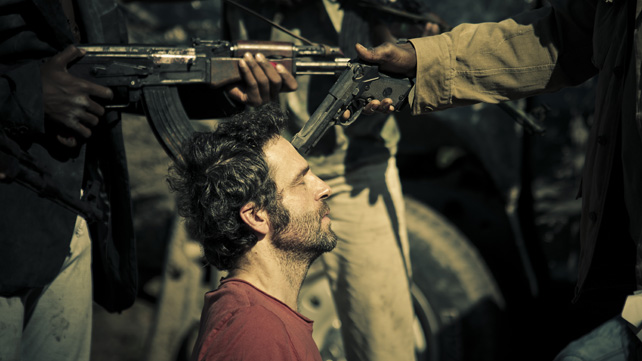This year’s Milwaukee Film Festival featured eight shorts programs of seven to nine films running from five to twenty minutes each. The Trib picked some of this year’s best shorts from the series of animated works in “Let’s Get Animated’s,” the mini-documentaries of “Stranger than Fiction” and the local pieces from “The Milwaukee Show.” The shorts offered plenty to wonder at with intriguing, experimental and even shocking stories making it to the big screen.
Shorts: Let’s Get Animated
“Oh Willy…”
Director: Marc James Roels, Emma De Swaef
“Oh Willy…” takes full advantage of creative animation to paint an introverted, overweight titular character as a lonely man with a mother complex.
After visiting his ailing mother at a hospital inhabited by nudists, we are plunged into Willy’s strange subconscious saga of childhood memories, future mountain fantasies and surreal imagery.
The film’s combination of animation and silent storytelling masterfully explore a broken character — at times even using moments of discomfort and humor. Much of the audience’s reaction, for example, came from the shock of seeing felt figures in the nude or at Willy calming his mind with memories of breastfeeding.
The characters and sets were made from atypical stop-motion materials, replacing clay and plastic with felt and wool. All parts come together to give “Oh Willy…” a one-off feel that brings the audience right into Willy’s rightfully conflicted mind.
“I am Tom Moody”
Director: Ainslie Henderson
Using animated clay figures, director Ainslie Henderson creates a targeted character portrait of Tom Moody, an amateur musician who stands frightened onstage before engaging in a discussion of self-doubt with his younger self.The animation relies on its simplicity: Tom’s stage is stark black, leaving us alone with the two Toms and whatever items or characters can help them work through their inner debate. Childhood Tom and his equally frightening cousin, Steve, let the audience observe Tom’s internal struggle.
Illustrating the subconscious fight between a man and his inner-child is tough to squeeze into eight minutes, but Henderson makes it happen with expressive faces and fleeting background stories. The animation’s fluidity is especially impressive: wide-eyed facial expressions on both Tom and his childhood counterpart constantly draw parallels between the two. Sometimes lighthearted and often surreal, the film offers a peek into childhood struggles Tom never could shake.

Shorts: Stranger Than Fiction
“The Flogsta Roar (Flogstavralet)”
Director: Johan Palmgren
In Uppsala, Sweden, students of the Flogsta neighborhood throw open their doors and windows at 10 p.m. year-round and let out a communal, stress-killing scream with a unity that would make Howard Beale proud.
A film about such an exceptional event would have failed if it were to spend its time in typical documentary format, with interviews regarding the origins of the roar itself or impersonal recollections of community reactions to the tradition.
Rather, director Johan Palmgren takes the audience through typical preceding hours in the dormitories, shedding light on the stresses that inspire the scream rather than the elusive origins of the tradition itself. Instead of just hearing the theories, we watch as students call the police over stolen food from the dorm’s refrigerator — some of the simpler trials of the community.
Of all the “Stranger Than Fiction” documentary shorts at the festival, this film pulled itself furthest from a traditional style. When the roar finally comes, it is all the more satisfying to watch.
The Milwaukee Show
“Spectacle!”
Six Milwaukee directors – Andrew Swant, WC Tank, Erik Ljung, John Roberts, Kurt Raether and Carol Brandt – each took a stab at directing a different film genre to create a chapter in “Spectacle!,” a heavily stylistic exploration of film and genre conventions.
Never seeming to bite off more than it can chew, the film’s leads, “bumbling busboy Tilt and debutant Ladybird Isabelle,” flow through the stages of their escape from the fabricated film world almost seamlessly – through silent film, science fiction, film noir, fantasy, musical and independent film.
Some genres were especially pleasing. The fantasy works in an impressive array of visuals, and the silent film plays with the audience by introducing a cryogenic chamber to force lead characters to enter the next genre stage. Others were just a tad off – at the film noir stage, for example, the music and camera were spot on, but the characters themselves detracted from the scene by remaining static throughout their movements.
“Spectacle!” originally remained divided by its separate segments for a multi-room screening at the North End apartments back in February: six films, from six genres, by six directors, in six separate rooms. After the screening, filmmakers mentioned the challenge of converting the individual parts into a concise flowing film for the big screen. It mixed together well in the end — though I can only imagine the magic of seeing “Spectacle!” outside a traditional theater format.


